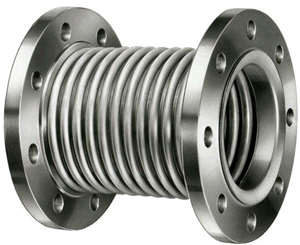

By default, axial expansion joint allows movements along the pipe axis. No bending and lateral movements are allowed.
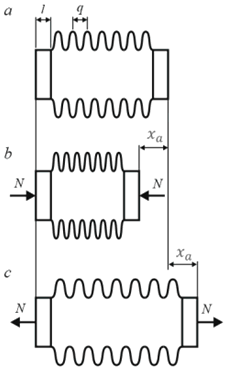
This type of expansion joint can be used only on the straight pipe. This pipe should be restrained between two anchors and required number of guide supports should be placed.

The span between guides is determined by stability (buckling) analysis.
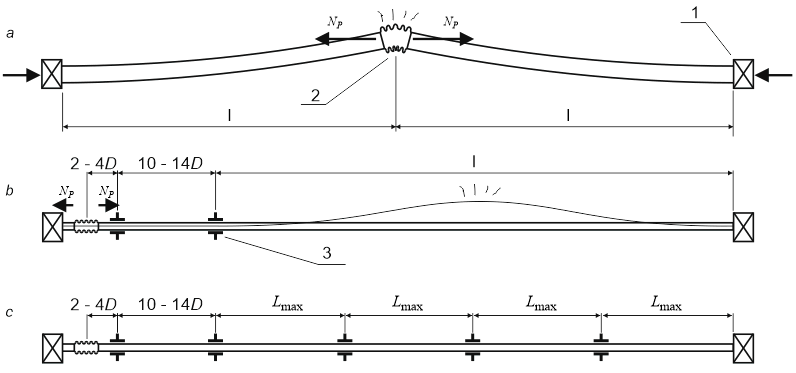
If bellows is placed in the different layout and can be exposed also for bending and lateral deformations, then "Allow bending and lateral movement" option should be checked. In this case PASS/START-PROF will allow bending and lateral deformations. The bending and lateral stiffness will be calculated automatically based on the specified axial stiffness. As an alternative, the Universal Expansion Joint can be used, but it will require to enter the bending lateral and torsion stiffness and allowable deformations.
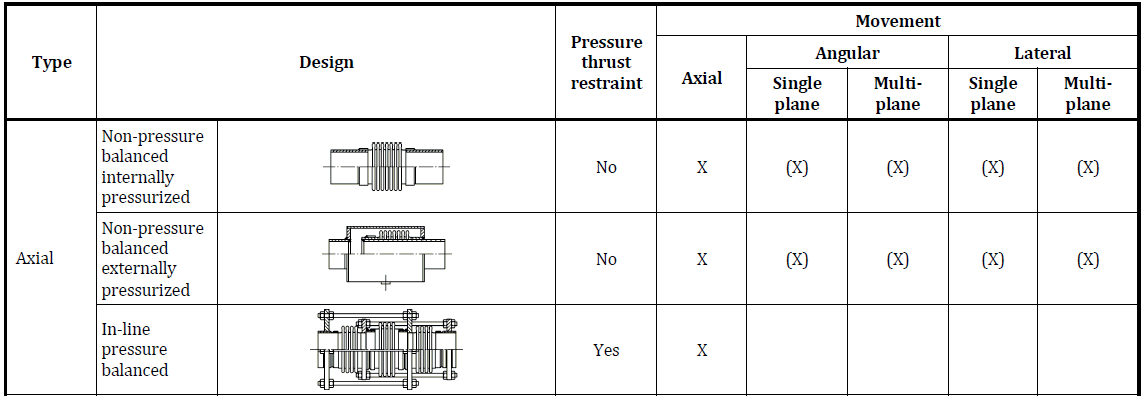
If axial expansion joint is used then bending stiffness (KR) and lateral stiffness (KL) are calculated using following equations:
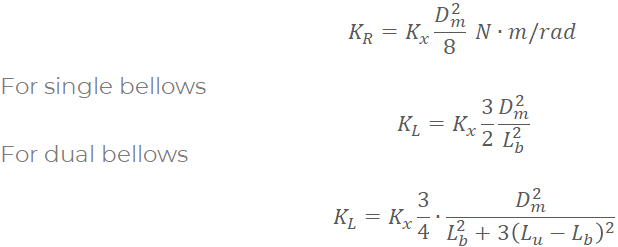
Where Kx - axial stiffness, Dm - mean diameter, Lb - bellows length, Lu - total expansion joint length
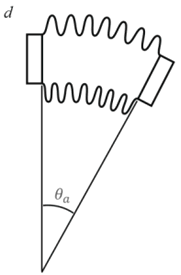
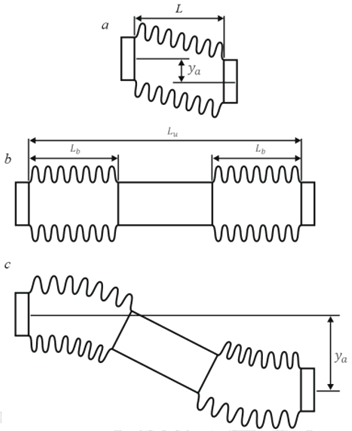
The allowable rotation and lateral deformation is usually absent, so PASS/START-PROF calculate the equivalent axial deformation (x) in Expansion Joint Deformation Table using equations:
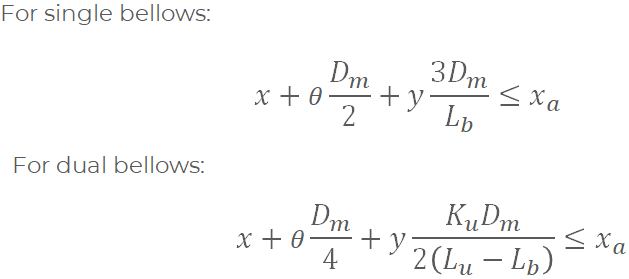
Lb – Corrugated length of bellows
Lu – Distance between outermost ends of convolutions
Dm – Mean diameter of bellows convolutions
See also "How to Reduce the Nozzle Loads in START-PROF"
All expansion joint properties can be taken from expansion joints database by pressing the "..." button and selecting the appropriate expansion joint.
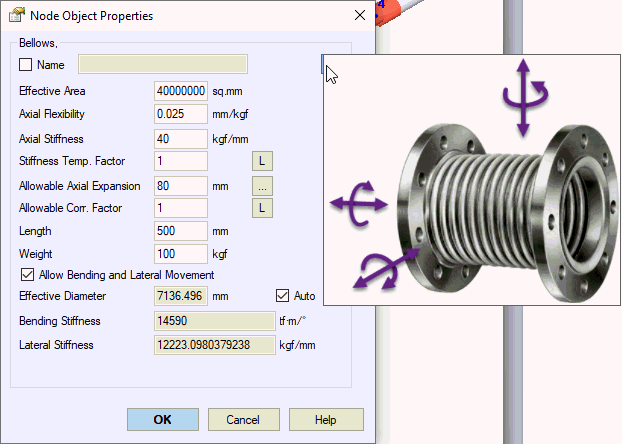
Property |
Description |
Name |
Element name. If checked then it shown in 3D view |
Effective area |
Expansion joint effective area. Used for calculating thrust force. More.. For bellows, Effective Area Aeff is an area if circle with an Effective mean bellows diameter Dm: Aeff = Pi * (Dm)^2 / 4 Approximately Dm = (Dmin + Dmax)/2 is mean bellows diameter. Value must be obtained from manufacturer For pressure balanced expansion joints Aeff=0. |
Axial Flexibility |
Axial flexibility, (1/Kx) of whole length of expansion joint (all convolutions). Value must be obtained from manufacturer |
Axial Stiffness |
Axial Stiffness, (Kx) of whole length of expansion joint (all convolutions). Value must be obtained from manufacturer |
Stiffness Temp. Factor |
For elevated temperatures material elastic modulus is reducing, therefore the stiffness values should be adjusted. This correction factor is equal to the ratio of elastic modulus at operating and ambient temperature for bellows material and can be specified for each operating mode depending on the temperature
|
Allowable Axial expansion, Δk/2 |
Allowable axial expansion movement (maximum allowable linear deformation): Δk/2, where Δk - full allowable axial expansion movement. Used for analyzing expansion joint deformation. Value must be obtained from manufacturer |
Allowable Corr. factor |
Allowable movements are based on a reference number of load cycles and pressure. It should be adjusted to the actual number of cycles and pressure. This correction factor can be specified for each operating mode depending on the pressure
|
Length |
Expansion joint length Lu. In the internal second layer hidden model PASS/START-PROF model this type of expansion joint as zero length expansion joint and adds two rigid elements with length Lu/2 on the both sides. Non zero-length expansion joints can be modeled using Flexible Element |
Weight |
Expansion joint weight that is applied on the rigid elements (half on the left and half on the right) |
Allow bending and lateral movement |
If turned on, software use bending and lateral stiffness as described above |
Effective diameter, Dm |
Effective diameter is calculated using effective area
|
Bending Stiffness, Lateral Stiffness |
Bending Stiffness KR and Lateral Stiffness KL calculated by equations above |
To insert a ballasting weight, select the desired node and use the menu option: Insert > Expansion Joint > Axial Expansion Bellows